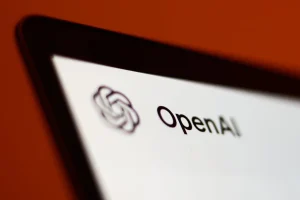Google Translate’s Monumental Expansion: 110 New Languages Added

Google Translate has taken a giant leap forward. By adding 110 new languages to its service, the platform aims to break down communication barriers like never before. With the power of advanced AI technology, Google Translate is now more inclusive and powerful.
This mega-update will impact millions globally. From widely spoken languages like Cantonese to lesser-known ones such as Manx, the addition covers a broad spectrum. Overall, it is set to benefit over 614 million people, making communication smoother and more accessible.
A Monumental Expansion
Google Translate has just made a significant leap. They are adding 110 new languages to their translation service. This move aims to break down communication barriers for millions around the world. By using advanced AI technology, Google Translate is now more powerful and inclusive than ever before.
These new languages represent a wide range of global communities. From widely spoken languages like Cantonese to lesser-known ones like Manx, the expansion is massive. In total, this update will help over 614 million more people communicate with ease.
The Power of PaLM 2
The backbone of this expansion is Google’s PaLM 2 large language model. This powerful AI allows for efficient learning of languages. Using it, Google has managed to support a diverse variety of languages, many of which are closely related to each other.
The PaLM 2 model works by understanding the intricacies of different dialects and regional variations. This means it can handle everything from mainstream languages to more obscure ones, giving users accurate and reliable translations.
Additionally, by collaborating with linguists and native speakers, Google ensures that the translations are not only technically accurate but also culturally relevant.
Focus on African Languages
A significant portion of the new languages comes from Africa. About a quarter of them are African languages, making this Google Translate’s largest expansion in that region to date.
Languages like Fon, Kikongo, Luo, Ga, Swati, Venda, and Wolof are now supported. This is a considerable step forward in making digital communication more inclusive.
For many of these languages, there has been a substantial amount of volunteer contributions to make their inclusion possible. This community effort has been instrumental in bringing these languages to Google Translate.
Highlighting Unique Languages
Each new language added has its own story and significance. Take Manx, for instance. This Celtic language from the Isle of Man almost went extinct in 1974. But thanks to revival efforts, it is now back in use.
Another unique addition is NKo, a standardized form of the West African Manding languages. It features a unique alphabet and has an active research community developing resources for it.
Punjabi (Shahmukhi) is another notable inclusion. This variety is written in Perso-Arabic script and is the most spoken language in Pakistan. Adding it will help millions communicate more effectively.
Technical Challenges and Triumphs
Adding new languages is not without its challenges. For instance, Cantonese has long been one of the most requested languages. However, because it often overlaps with Mandarin in writing, it was tricky to find data and train models.
Manx also posed its own set of problems. With the last native speaker passing away in 1974, finding reliable data for this language involved a different kind of detective work.
Nevertheless, Google’s advanced AI and dedicated team of linguists managed to overcome these hurdles. Now, users can translate into these complex languages accurately and reliably.
Language Selection Criteria
Choosing which languages to add is a complex process. There are numerous factors at play, from the number of speakers to the availability of data.
Google prioritizes the most commonly used varieties and dialects of each language. For example, the Romani language has many dialects, but Google’s models focus on the Southern Vlax Romani due to its prevalence online.
By focusing on widely used varieties, Google ensures that the translations are applicable to the largest number of users possible. This approach helps to maximize the impact and usability of the Translate service.
Future Prospects
This expansion is a testament to Google’s commitment to breaking down language barriers. But the journey doesn’t stop here.
The company plans to add even more languages and dialects in the future, aided by ongoing technological advancements and partnerships with linguists.
Google’s ultimate goal is to support the 1,000 most spoken languages around the world. This ambition highlights the company’s dedication to making communication accessible to everyone.
Get Started with Google Translate
If you’re excited to try out these new languages, getting started is easy. Visit the Google Translate website or download the app on your Android or iOS device.
The new languages are already available, so you can start exploring and breaking down communication barriers right now.
Whether you’re translating a menu, a website, or even a conversation, Google Translate’s latest update has got you covered.
Google Translate has made a groundbreaking stride in language inclusion. With the addition of 110 new languages, the platform is revolutionizing how we connect globally. Thanks to advanced AI, communication is now truly barrier-free, underscoring Google’s commitment to inclusivity and technological advancement.






